- Home
- Linda Castillo
Kate Burkholder 2 - Pray for Silence Page 2
Kate Burkholder 2 - Pray for Silence Read online
Page 2
“Good.” Dr. Ludwig Coblentz is a local pediatrician and acting coroner for Holmes County. “Tell him I’ll meet him out there.”
My mind spins through possible scenarios as I cross to the closet and yank my uniform off a hanger. The Planks are Amish. I know many Amish families keep rifles on hand for hunting and livestock slaughter. They are a peaceable, pacifistic society; violent crime is rare. I can’t get my mind around the fact that there are multiple victims. Maybe because that tells me the shooting was no accident.
Painters Mill is a small town located in the heart of Ohio’s farm country. About a third of the 5,300 residents are Amish. I myself was born Amish in this very town just over thirty years ago. Though 80 percent of Amish children join the church at the age of eighteen, I was one of the few who chose not to be baptized. But roots run deep, especially if you’re Amish, and it was those roots that brought me back.
I’ve been the chief of police for nearly three years now. It’s a good job. Painters Mill is a good place to live. A wholesome town in which to raise a family. I want to believe major crime doesn’t happen here, but experience has taught me even small, idyllic towns are not immune to violence.
I’m acquainted with most of the local families, both Amish and English. I’m fluent in Pennsylvania Dutch, the Amish dialect. Though I no longer live my life according to Gelassenheit—the foundation of Amish values—I have great respect for the culture. It’s a respect borne of genuine understanding, not only of the people, but the Plain life in general, and the religion so integral to both.
As I drive toward the Plank farm, it strikes me that I don’t know much about Bonnie or Amos Plank. I search my memory and recall that they’re new to the area, having relocated from Lancaster County about a year ago. They have several children and run a small dairy operation. As I start down the gravel lane, I wonder what problems might have followed them here from Pennsylvania.
I arrive to find Skid’s cruiser parked behind a buggy. The emergency strobes cast red and blue light onto the house and outbuildings, giving the farm the appearance of some weird rock video. Grabbing my Maglite, I get out, draw my .38 revolver and start toward the back door. I’m midway there when my beam illuminates a bloody handprint on the jamb. A quiver of unease goes through me when I spot the shiny black droplets on the concrete porch and sidewalk. Shoving open the door, I step into a large kitchen.
Moonlight slants through the window above the sink, but it’s not enough to cut through the shadows. “Skid!” I call out.
“In here!”
The stench of blood fills my nostrils as I traverse the kitchen. I go through the doorway into the next room. The first thing I see is the yellow-white slash of Skid’s flashlight beam. We’re standing in a large room backlit by two tall, narrow windows. I make a 360-degree sweep with my flashlight. “What happened?”
Even as I ask the question, my beam lands on the first body. A middle-aged Amish male lies facedown in the center of the room.
“We got two more over there.” Skid’s voice seems to come from a great distance.
My hand threatens to shake as I run my beam along the floor, but I hold it steady as the light reveals two more bodies. My vision tunnels when I realize the victims are children. The first is a teenaged boy. Gangly arms and legs. Bad haircut. Lying prone, he wears a faded work shirt, suspenders and trousers that are slightly too short from a recent growth spurt. His hands are bound behind his back. I see the black shimmer of blood at the back of his head.
A few feet away, a younger boy lies on his side in an ocean of blood, some of which has soaked into a homemade rug. I guess him to be nine or ten years old. He’s wearing a nightshirt. Like the other boy, his hands are bound. The soles of his feet are dirty, and I know that just scant hours before he’d run barefoot and carefree through this house. From the pale oval of his face, cloudy eyes seem to stare right at me. I see blood on his cheek and realize the bullet exited through his mouth, tearing through his lips, blowing out several teeth.
It’s a surreal scene and for the span of several heartbeats, I can’t get my mind around it. Shock is like a battering ram, assaulting my brain. Dead kids, I think, and a hot bloom of outrage burgeons in my chest. The urge to go to them, perform CPR, try to save them, is powerful. But I know they’re gone. The last thing I want to do is contaminate the scene.
I shift my beam back to the adult. A hole the size of my fist mars the back of his head. I see bone fragments, flecks of brain matter and blood in his hair. Exit wound, I think, and realize he was shot from the front.
“Did you check for survivors?” I hear myself ask.
Skid’s silhouette looms against the window. Even in the near darkness, I see him shake his head. “I checked pulses. They’re DOA.”
I look around, and it strikes me that the son of a bitch who did this could still be in the house. “You clear the place?”
“Not yet.”
I hit my radio. “This is 235. Mona, I’m 10-23.”
“What’s going on out there, Chief?”
“I need you to call Glock and Pickles at home. Get them out here 10-18.”
“Roger that,” Mona says.
“Use your cell, in case some insomniac has his scanner on. Tell Glock we need a generator and some work lights, will you?”
“Got it, Chief.”
I look at Skid. “Let’s clear the rest of the house.”
I start toward the hall. I hear Skid behind me, and I know he’s got my back. Our feet are silent on the oak floor as we move toward the bedrooms. In the back of my mind, I wonder if there are more victims. If anyone survived. I wonder what kind of a monster could kill innocent children… .
I reach the bathroom and shove the door open with my foot. My .38 leading the way, I enter, drop low and sweep the room. I see an old-fashioned claw-foot tub. A single window, closed and locked. A porcelain sink. I check the tub. “Clear.”
I turn to see Skid start down the hall. I bring up the rear this time, watching his back. He sidles into the first bedroom. I follow close behind, my every sense honed on our surroundings. I see two twin-size beds. Two windows, closed. A chest of drawers. A pair of ice skates tossed in the corner. Skid shifts his weapon, yanks open the closet door. I move in, but the small space is empty. I go to the bed, drop to my knees and look beneath it.
“No one here,” Skid says.
“Let’s check the upstairs.”
“There a cellar?” he asks.
“I don’t know. Probably.”
It takes us ten minutes to clear the rest of the house, which includes the basement, the second-level bedrooms and the small attic. I’m comfortable working with Skid; I trust his instincts as a cop, and we work well as a team. In the end, our efforts are in vain. The house is vacant.
We end up in the living room. For a moment, neither of us speaks. We don’t look at the bodies, and I get the sense that we’re both struggling to comprehend the cold brutality of the crime.
“What do you think happened?” Skid asks after a moment.
“Hard to say.” I glance down at the dead boy at my feet. So young and innocent. I look at the father and for the first time it strikes me that his hands aren’t bound. As a cop, I know things aren’t always as they appear at first glance. Preconceived notions are a dangerous thing when you walk into a crime scene, so I strive to avoid making snap judgments. But as I stare down at the dead man, all I can think is, Why aren’t your hands bound, too?
“You find a weapon?” I ask.
“Handgun there.”
My eyes follow his beam. Sure enough, protruding from beneath the man’s right hand is the blue barrel of a semiautomatic handgun. “Looks like a Beretta.”
“I didn’t know the Amish kept handguns.”
“They don’t, usually, especially a semiauto,” I reply. “Rifles for hunting.”
“His hands aren’t tied,” Skid comments.
“That wound at the back of his head looks like an exit.”
Skid’s gaze meets mine. “You think he did this?”
I don’t want to acknowledge the ugly suspicions knocking at my brain. That this man snapped, murdered his two sons and then turned the gun on himself. The scenario goes against every conviction most Amish hold dear. I know it’s a generalization. But murder is extremely rare in Amish society. Suicide is almost as uncommon. It is the one sin for which there is no redemption.
“I don’t know.” I look around. “Any sign of the mother?”
“No.”
“I think they have more kids,” I say. “Girls.” I recall the bloody handprint on the back porch, and I’m disheartened by the possibilities crowding my brain. “Let’s check the yard and outbuildings.”
Best-case scenario, we’ll find Mom and the girls hiding and frightened, but alive. The knot in my gut tells me that hope is optimistic.
Without holstering our weapons, we pass through the kitchen and go out through the back door. We glance briefly at the bloody print.
“Could be a woman’s,” Skid says.
“Or a teenager’s.” If my memory serves me, the two girls are in their teens.
His beam illuminates droplets of blood and a single bloody footprint on the concrete. “Looks like someone ran out of the house.”
“Toward the barn.”
After being inside the house, the moonlight seems inordinately bright. My shadow keeps pace with me as I move down the sidewalk. We’ve gone about ten yards when I spot the body. A mature female wearing a plain dress, an apron and white kapp lies facedown in the grass. But it is the sight of the dead infant in her arms that rocks me.
“Jesus Christ.” Skid scrapes a hand over his face. “A fuckin’ baby.”
The gray skin and glazed eyes tell me both mother and child are deceased. Blood clings to the grass like a spill of motor oil. I see a hole the size of a dime in the fabric between the woman’s shoulder blades. “Looks like the bullet went right through her and into the baby.”
“Shot her in the back.”
“While she was running away.”
“Chief, who the hell would do something like this?”
“A monster.” Hoping the look I give him doesn’t reveal the dark emotions thrashing inside me, I motion toward the barn. “Let’s hope he left someone alive to tell us.”
The barn is a massive structure with a stone foundation and rusty tin roof. A cupola and weather vane jut two stories into the night sky. Lower, half a dozen small windows watch us like old, sorrowful eyes. Like many of the barns in the area, the building is well over a hundred years old.
Skid and I move down the sidewalk in silence. The chorus of crickets seems unduly loud, but I know it’s because my senses are hyperaware. Somewhere in the near distance, I hear cattle bawling. Having spent many a predawn morning pulling teats, I recognize the sound. The animals’ udders are full, and they’re waiting to be milked.
I reach the barn first and push open the door with my foot. “Try not to touch anything,” I whisper.
The hinges creak as the door rolls open. The earthy smells of livestock, hay, and manure waft out on a breeze. The barn is pitch black inside. Holding my Maglite in my left hand, my weapon in my right, I step in and quickly sweep the area. I’m aware of Skid behind me, his beam cutting through the darkness to my left. I can hear his quickened breaths rushing between his teeth.
“This is the police!” I call out. “Put your hands up and come out! Now!”
We move deeper into the barn. The rush of blood through my veins is deafening. If someone were to ambush us, I wouldn’t hear them coming. I nearly jump out of my skin when I see movement ahead. I straighten my gun arm, snug my finger against the trigger. It takes a second for my brain to process the sight of a dozen or so Jersey cows standing in stanchions, waiting to be fed and milked.
“Glad I didn’t plug a cow,” I mutter.
“Some goddamn light would be nice.”
“There’s probably a lantern around here somewhere.”
I see the outline of livestock stalls to the left. Straight ahead lies the milking area; from where I stand I discern the curdled-milk stink common to dairy operations. I see the brick and concrete floor upon which stanchions and hay racks were built. Though many Amish have begun using modern milking machines powered by either diesel or gasoline generators, I see no such machinery here, telling me the Planks still milk by hand.
Catching Skid’s eye, I motion him left. I go right and enter a wide aisle with a hard-packed dirt floor. Ahead is a large equipment area. I see a steel-wheeled plow with hit-or-miss shares. A buggy missing a wheel sits propped up on a hand jack. A wood-and-steel manure spreader gathers dust beneath a moonlit window. To my right I spot yet another door. It’s closed. The proximity to the stalls and equipment area tells me it’s probably a tack room, where harnesses for the horses, grooming supplies, halters and veterinary medicines are stored. Seeing no movement in the aisle, I cross to the door, twist the knob and shove it open.
The beam of my flashlight illuminates a large room with rough-hewn walls and a wood plank floor. High ceilings transected by beams as thick as a man’s waist. A rush of adrenaline burns through me when I spot the girl. On instinct, I bring up my weapon. At first glance she appears to be standing with her arms stretched over her head. Then I realize her wrists are bound and tied to an overhead beam.
For a second, I’m so shocked I can’t speak or move or even think. Then my cop’s mind switches on and the horrific details of what I’m seeing slam into my brain. The victim is young and female. Nude except for a kapp, she hangs limply from the overhead beam. Her head lolls forward so that her chin rests on her chest. I see dried blood, where it ran between her breasts and down her abdomen. Her knees have buckled, but the rope holds her upright.
“My God,” I hear myself say.
I shift my light, scan the rest of the room. I hear myself gasp when my beam illuminates a second victim. A female, slightly older. Also nude, but for her kapp. Like the other victim, she hangs suspended from an overhead beam.
In the course of my law enforcement career, I’ve seen death more times than I care to think about. I’ve seen terrible traffic accidents. Death from natural causes, heart attacks and strokes. A drowning occurred just two months ago out on Miller’s Pond. I’ve seen murder in all its execrable forms. But I will never get used to it.
My hands tremble as I reach for my lapel mike. “Skid … I got two more.”
“Where are you?”
“Tack room. Just down the aisle.”
“I’m on my way.”
I train my flashlight beam on the nearest victim. I can smell the blood now. Dark and metallic with the sickening undertone of methane gas. I’m not unduly squeamish, but my stomach quivers uneasily as I draw close. I can’t imagine what happened here. I sure as hell don’t want to think about the horrors these girls must have endured.
“Aw, man.”
I nearly drop my Maglite at the sound of Skid’s voice. I turn to see him standing in the doorway. He holds his revolver in his right hand, his flashlight in his left. His eyes are fastened on the two bodies.
“Jesus Christ, Chief.” He steps into the room, his voice little more than a whisper. “What the hell happened?”
Skid is usually pretty laid-back. He’s cocky with a dry sense of humor, a quick wit, and has never been overly sensitive to some of the things cops are forced to deal with. As he takes in the carnage before us, his brash façade falls away. His expression relays the same horror and disbelief I feel burgeoning in my chest.
He moves closer to me.
“Watch for footprints,” I tell him.
His beam illuminates the plank floor, sweeps left and right. As if of its own accord, my beam paints the nearest body with terrible light. Dozens of bruises, contusions and abrasions mar the dead girl’s torso, arms and legs. Small patches of skin are bright red. Other areas are nearly black. At some point, she’d vomited. I can smell the sour stink of it from where I sta
nd.
“I got a footprint,” Skid calls out.
“Mark it.” I don’t take my eyes off the corpse. “Looks like they were tortured.”
“Someone tied them up and just went to fuckin’ town on them,” Skid says after a moment.
He lowers his flashlight and in that instant of light, I notice two small marks on the floor. “Wait,” I say. “What’s that?”
I squat next to the marks. Upon closer inspection, I can see there are actually three of them. They look like scuff marks in a thin layer of dust. If I were to connect them, they’d form a perfect triangle.
“What the fuck?” Skid whispers in a baffled tone.
“Mark them, will you?”
“Sure thing.”
“Keep your eye out for more footprints.”
“You bet.”
I shine my beam around the room. A few feet from where we stand, a propane torch, a small wooden club, a knife smeared with blood, and a foot-long skewer-like instrument sit neatly atop a workbench. Not the kinds of things you’d find in an Amish barn, and I know that whoever did this left them behind. “We might be able to lift some prints off those … tools.”
“Yeah.” Skid’s beam joins mine, and he makes a sound of disgust. “How the hell could someone do this? I mean, for chrissake, a couple of Amish girls?”
I have no answers. I have no words at all. For a moment the only sound comes from the stirring of the cows down the aisle and the muted song of the crickets outside.
“You think the father did this?” Skid asks.
I hear doubt in his voice and shake my head because I can’t imagine. “I don’t know.”
He shifts his beam back to the nearest victim. “Were they shot?” he asks. “Stabbed?”
Taking a deep breath, I train my beam on the victim nearest me. I see pale flesh speckled with blood. My beam stops on the black, gaping hole just below her navel.
“What the hell is that?” Skid’s voice comes from behind me.
“Knife wounds?” My voice is steady, but my beam quivers as a tremor of revulsion moves through my body.
“It looks like someone cut her open.”

 A Hero to Hold
A Hero to Hold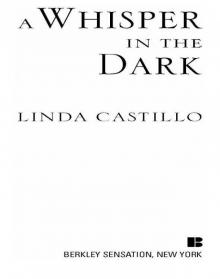 A Whisper in the Dark
A Whisper in the Dark After the Storm
After the Storm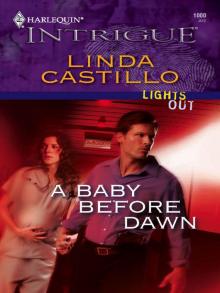 A Baby Before Dawn
A Baby Before Dawn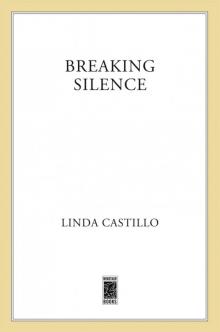 Breaking Silence
Breaking Silence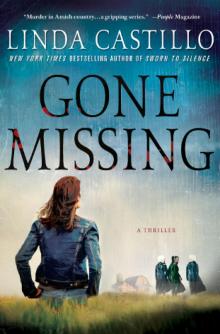 Gone Missing
Gone Missing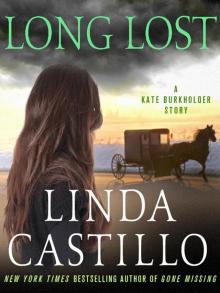 Long Lost
Long Lost Midnight Run
Midnight Run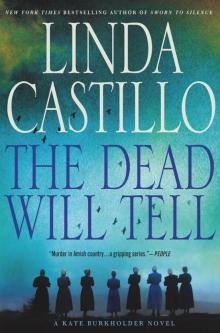 The Dead Will Tell
The Dead Will Tell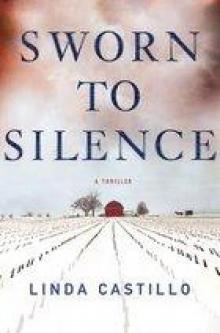 Sworn to Silence
Sworn to Silence Lay Down the Law
Lay Down the Law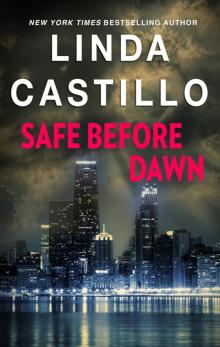 Safe Before Dawn
Safe Before Dawn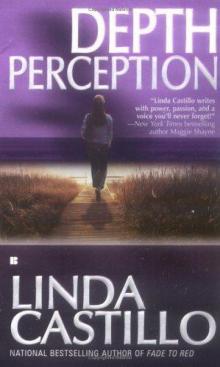 Depth Perception
Depth Perception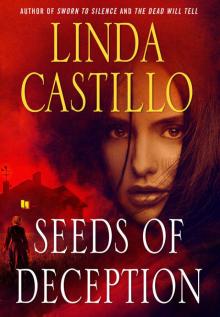 Seeds of Deception
Seeds of Deception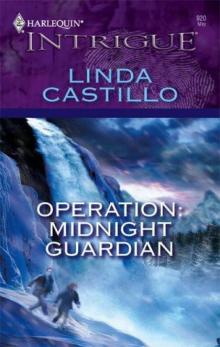 Operation: Midnight Guardian
Operation: Midnight Guardian The Perfect Victim
The Perfect Victim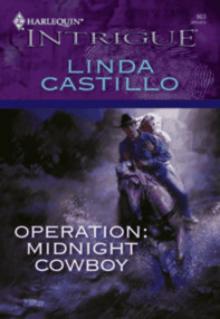 Operation: Midnight Tango
Operation: Midnight Tango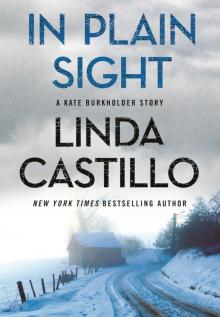 In Plain Sight (Kate Burkholder)
In Plain Sight (Kate Burkholder)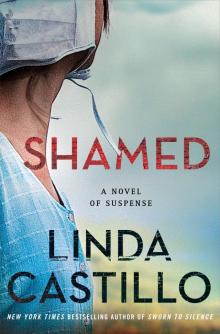 Shamed
Shamed Fallen
Fallen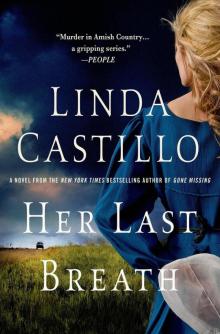 Her Last Breath
Her Last Breath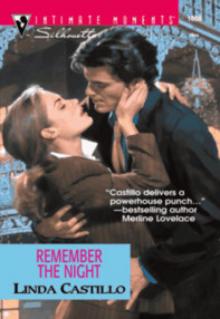 Remember the Night (Men in Blue)
Remember the Night (Men in Blue)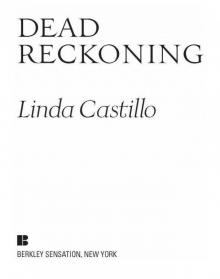 Dead Reckoning
Dead Reckoning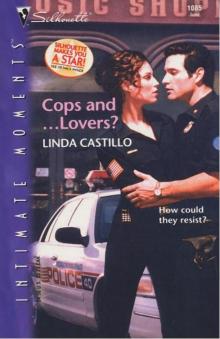 Cops and ... Lovers?
Cops and ... Lovers? The Pact
The Pact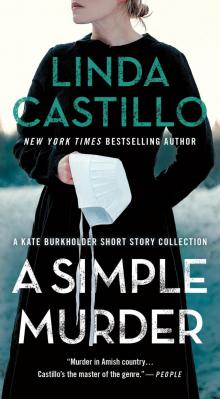 A Simple Murder
A Simple Murder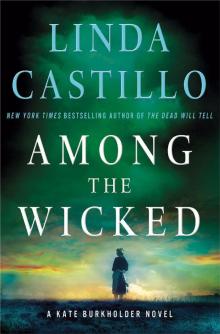 Among the Wicked
Among the Wicked In the Dead of Night
In the Dead of Night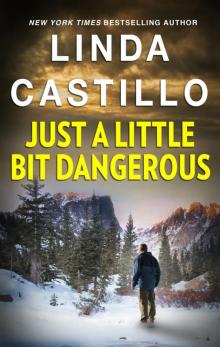 Just a Little Bit Dangerous
Just a Little Bit Dangerous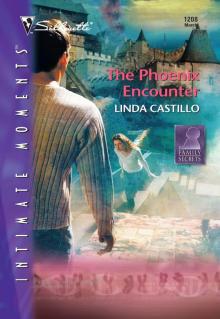 The Phoenix Encounter
The Phoenix Encounter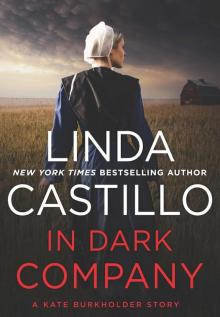 In Dark Company
In Dark Company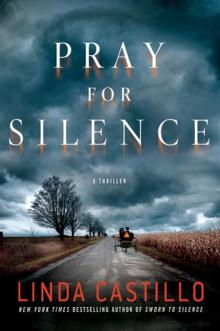 Pray for Silence
Pray for Silence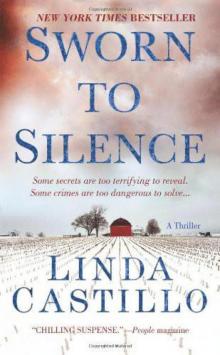 Kate Burkholder 01-Sworn to Silence
Kate Burkholder 01-Sworn to Silence Remember the Night
Remember the Night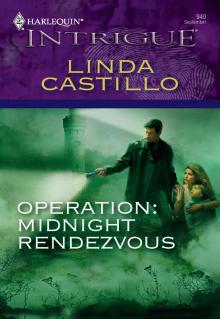 Operation: Midnight Rendezvous
Operation: Midnight Rendezvous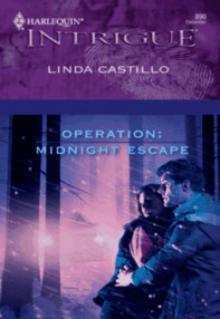 Operation: Midnight Escape
Operation: Midnight Escape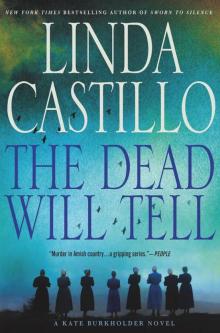 The Dead Will Tell: A Kate Burkholder Novel
The Dead Will Tell: A Kate Burkholder Novel Seeds of Deception: A Kate Burkholder Short Story
Seeds of Deception: A Kate Burkholder Short Story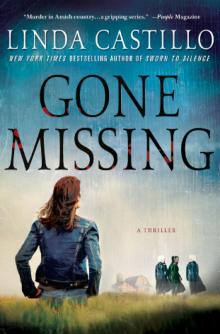 Gone Missing (Kate Burkholder 4) kb-4
Gone Missing (Kate Burkholder 4) kb-4 A Gathering of Secrets
A Gathering of Secrets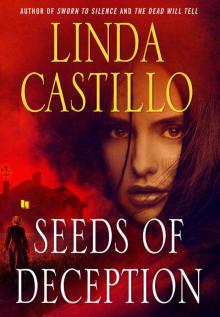 Seeds of Deception: A Kate Burkholder Short Story (Kindle Single)
Seeds of Deception: A Kate Burkholder Short Story (Kindle Single)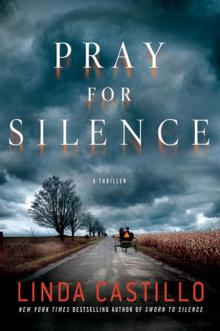 Pray for Silence kb-2
Pray for Silence kb-2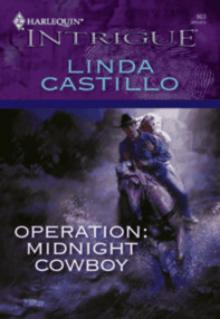 Operation: Midnight Cowboy
Operation: Midnight Cowboy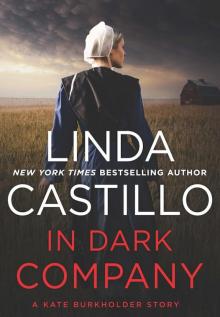 In Dark Company_A Kate Burkholder Short Mystery
In Dark Company_A Kate Burkholder Short Mystery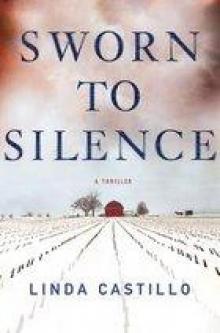 Sworn to Silence kb-1
Sworn to Silence kb-1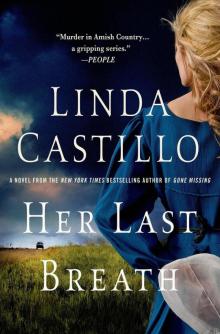 Her Last Breath: A Kate Burkholder Novel
Her Last Breath: A Kate Burkholder Novel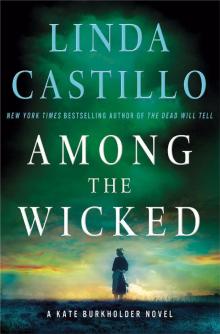 Among the Wicked: A Kate Burkholder Novel
Among the Wicked: A Kate Burkholder Novel Breaking Silence kb-3
Breaking Silence kb-3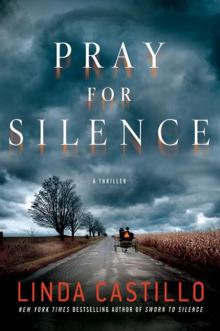 Kate Burkholder 2 - Pray for Silence
Kate Burkholder 2 - Pray for Silence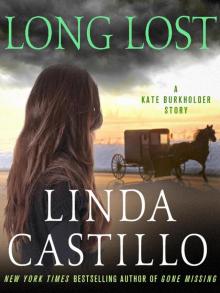 Long Lost: A Kate Burkholder Short Story
Long Lost: A Kate Burkholder Short Story